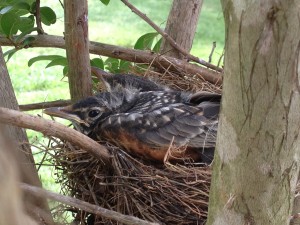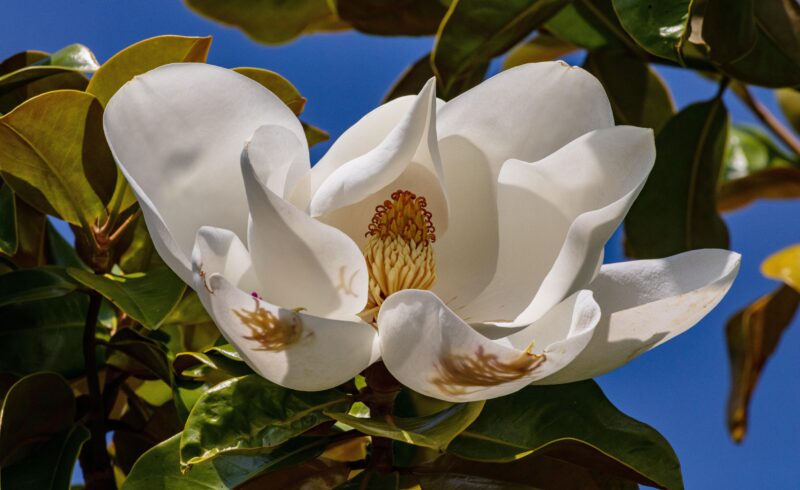
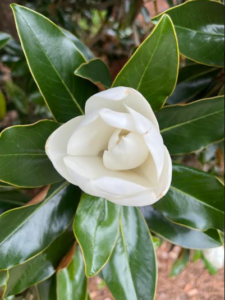 Few plants remind us of the south like Magnolia trees, with their massive cream blossoms and heady, sweet aroma. If you’ve spent much time in the south at all, you’ve probably seen some of these trees, but how much do you actually know about them?
Few plants remind us of the south like Magnolia trees, with their massive cream blossoms and heady, sweet aroma. If you’ve spent much time in the south at all, you’ve probably seen some of these trees, but how much do you actually know about them?
Range
The Southern Magnolia (scientific name: magnolia grandiflora, also known as the bull bay) is native to the Southeastern United States, ranging most predominantly in the Carolinas, through part of Florida, and across towards Texas. The genus name Magnolia is in homage to French botanist, Pierre Magnol. Although we tend to call the M. grandiflora by simply “magnolia,” that term technically only applies to the genus as a whole not our beloved southern beauty.
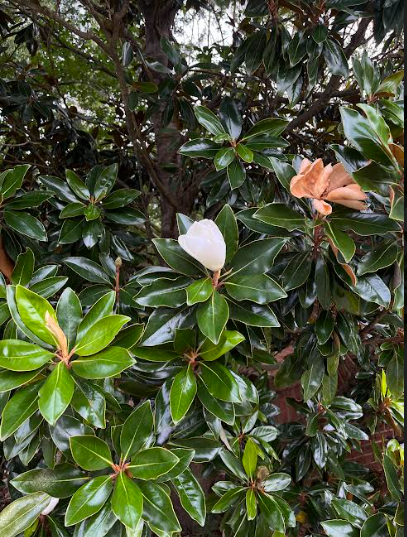
 The M. grandiflora is a fairly versatile plant, capable of being espaliered and tolerating salt spray well for more coastal locations. Though some variations differ, the traditional magnolia grandiflora doesn’t produce the classic rose-colored fruits and deep red seeds until at least 10 years of age. Seeds spread via birds and mammals, with turkeys, quail, possums, and squirrels being especially big fans of M. grandiflora seeds. With big oval-shaped leaves that are stiff and thick and stunning, splayed blooms, it’s easy to see why they are so well-known and well-loved.
The M. grandiflora is a fairly versatile plant, capable of being espaliered and tolerating salt spray well for more coastal locations. Though some variations differ, the traditional magnolia grandiflora doesn’t produce the classic rose-colored fruits and deep red seeds until at least 10 years of age. Seeds spread via birds and mammals, with turkeys, quail, possums, and squirrels being especially big fans of M. grandiflora seeds. With big oval-shaped leaves that are stiff and thick and stunning, splayed blooms, it’s easy to see why they are so well-known and well-loved.
Prehistoric Pollinators?
All that said, one of the coolest magnolia facts is that the genus pre-date bees! Magnolia fossils date back 90-100 million years, making them one of the oldest known trees in the world. Since they existed before bees did, magnolias count on a different insect family for pollination: beetles. A loose idea of the pollination process is that the male reproductive parts mature first, the beetles collect the pollen, and then the magnolia’s female reproductive parts mature—which look much like the male reproductive parts—draw the beetles back in where they deposit the pollen once more.
Appearance
Of course, the reason the Southern Magnolia is so well-known is largely due to its size. Though these trees are now cultivated in warm areas around the world, they grow to their most dramatic heights in their native region. There are M. grandiflora trees on record in excess of 100 ft. Plus, they can reach 30+ feet wide. M. grandiflora blossoms are also oversized—often matching the size of the hands or even heads of their admirers!
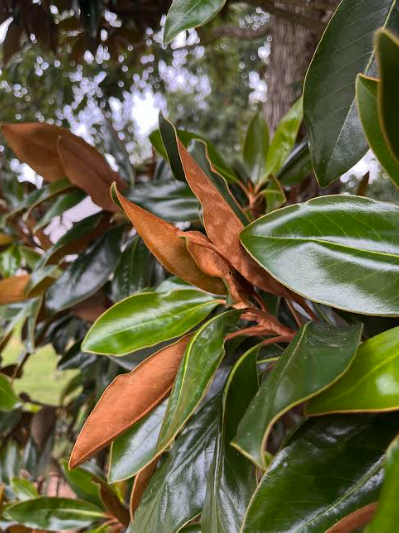 Despite all this, the M. grandiflora is variable in terms of appearance. Some are super dense while others are scragglier. It’s an evergreen, but it drops a lot of big, waxy leaves along the way. Many cultivars (meaning a plant variation created via selective breeding cultivation) of the magnolia grandiflora exist—including one known as the Teddy Bear—which boast different levels of density, are smaller, or offer some other specific trait. For instance, most cultivars have dark reddish-brown leaf undersides, whereas their wild relatives typically have pale green leaf undersides.
Despite all this, the M. grandiflora is variable in terms of appearance. Some are super dense while others are scragglier. It’s an evergreen, but it drops a lot of big, waxy leaves along the way. Many cultivars (meaning a plant variation created via selective breeding cultivation) of the magnolia grandiflora exist—including one known as the Teddy Bear—which boast different levels of density, are smaller, or offer some other specific trait. For instance, most cultivars have dark reddish-brown leaf undersides, whereas their wild relatives typically have pale green leaf undersides.
Now, when I see catch a whiff of these fragrant beasts or see their leaves covering the ground, it’s fun to know the difference between cultivar and wild. I have immense respect for these prehistoric southern belles.
Learn More
Find out more about magnolias on these great sites:
“Everything You Need to Know About the Southern Magnolia Tree.” Above and Beyond Tree.
“Southern Magnolia Tree Facts in Deep South Landscapes.” Dengarden.
“Southern Magnolia—Your Questions Answered.” Southern Living.
Want to discover more flora and fauna? Check out our other articles HERE.









